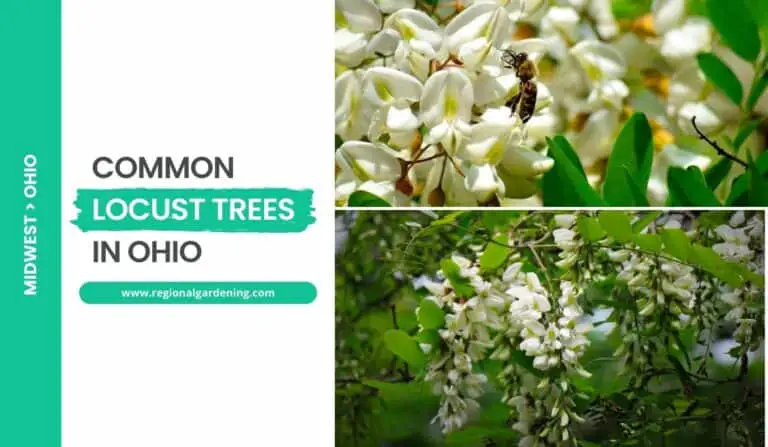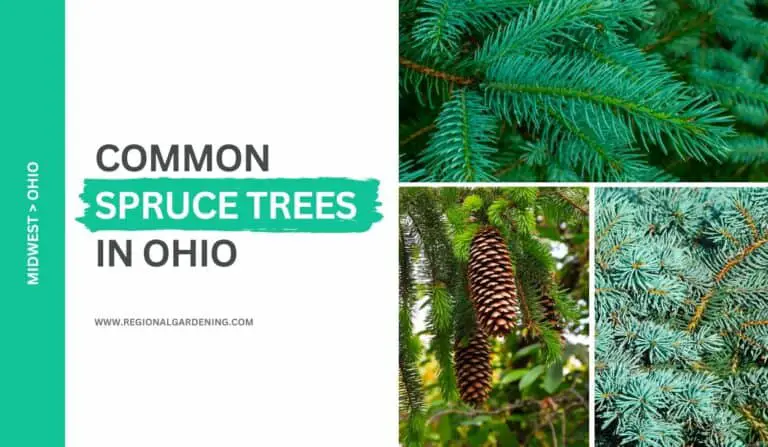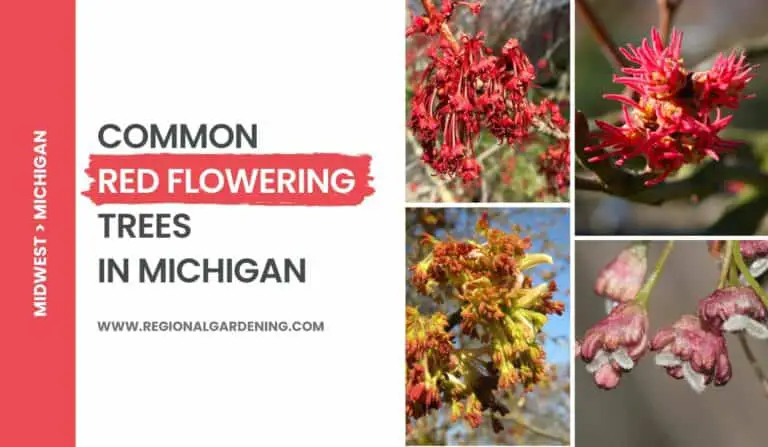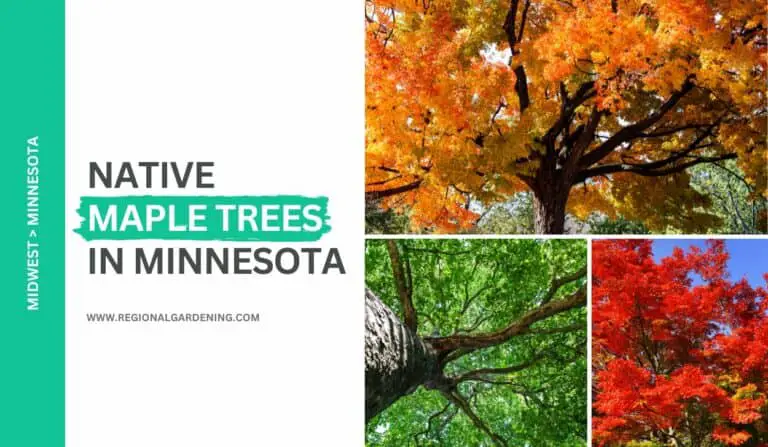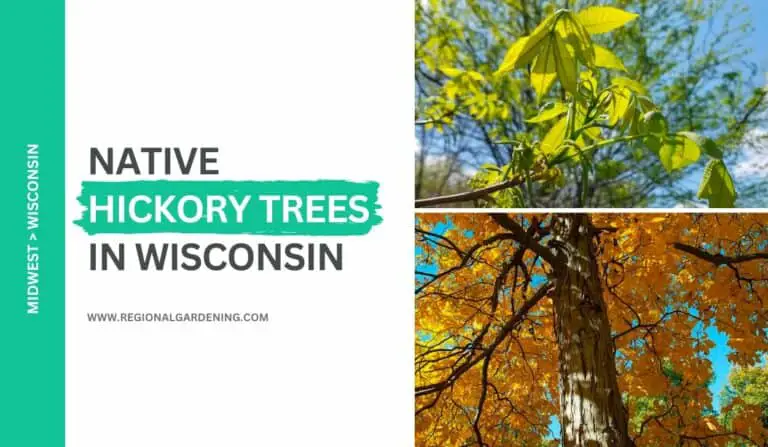Native Birch Trees In Minnesota (3 Types To Know)
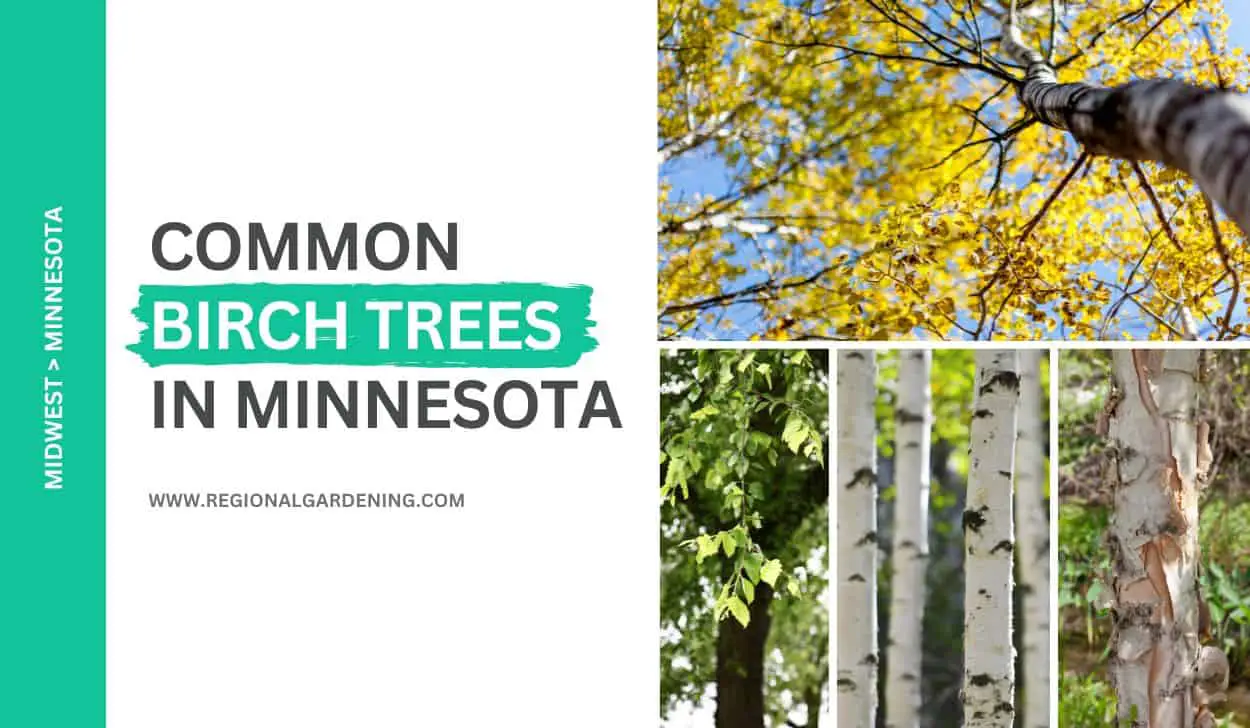
If you enjoy the great outdoors, you’ve probably spent some time exploring Minnesota’s forests. And if you have, you’ve undoubtedly seen some of the state’s most recognizable trees – the birches.
These trees are popular because of their slender trunks, delicate leaves, and striking white bark that appears to glow in the sunlight. But did you know that there are several different types of birch trees in Minnesota?
In this article, we’ll look at three of Minnesota’s most common birch trees and learn more about what makes each one unique.
So let’s look more closely.
1. Yellow Birch
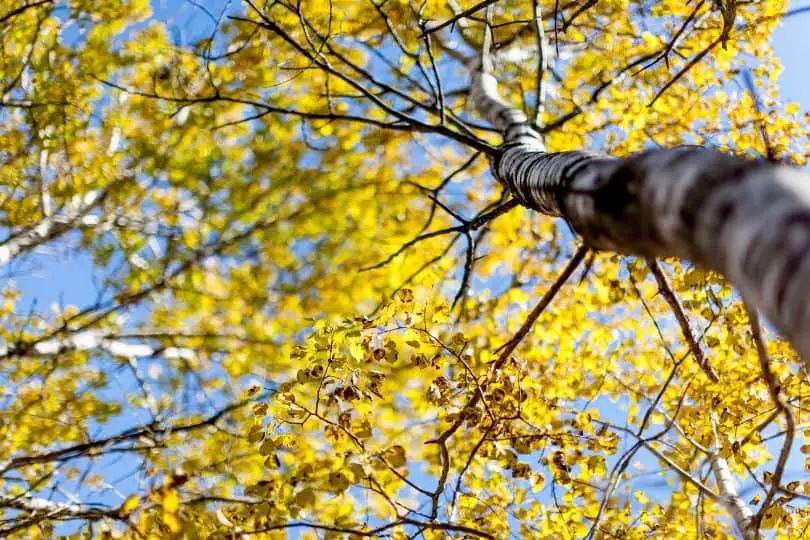
- Common Name: Yellow Birch
- Scientific Name: Betula lutea
- Mature Height: 80 to 85 feet
- Native/Non-Native: Native
- Flowers/Cones: Cone-shaped catkin with winged nutlets
- Uses: Manufacture of furniture, small interior finishing, etc.
Yellow birch trees are one of the tallest birch trees in Minnesota. These trees can grow up to 85 feet tall and 2 to 3 feet in diameter. Its trunk might be short or twisted at times. This tree is endemic to North America and has yellow-gray or straw-colored bark.
The bark peels freely into thin papery layers, giving the main stem and subordinate branches a ragged appearance. Yellow Birch twigs are light brown, glossy, and somewhat scented with wintergreen oil.
The leaves of the Yellow Birch are alternating, oval to oblong in form, and deeply and finely serrated.
They can reach a length of 5 inches and are dull dark green on top and paler beneath. When maturity, the tree produces cones approximately an inch long with chestnut-brown winged seeds.
Yellow Birch is generally found in the state’s northern half, particularly in regions with chilly, damp weather. This tree has dense, robust, durable, close-grained, light brown wood that polishes well.
It is often used for flooring, interior finishing, veneers, wooden goods, furniture, and small wooden novelties, as well as firewood. Wintergreen oil can also be extracted from its bark.
2. River Birch

- Common Name: River Birch
- Scientific Name: Betula nigra
- Mature Height: 80 to 90 feet
- Native/Non-Native: Native
- Flowers/Cones: Cone-shaped catkin with winged nutlets
- Uses: Manufacture of furniture and fuel
The River Birch, sometimes known as the Red Birch trees are the most commonly found birch trees in Minnesota. It is a stunning tree that may reach heights of 90 feet.
The bark of old trunks is dark brown and heavily furrowed, whilst the upper stem and larger branches are a shiny reddish-brown tint that peels freely. This tree’s twigs are reddish in hue.
River Birch leaves are alternating, triangular in shape, and feature double-toothed edges. The leaf’s upper surface is dark green, while the below surface is pale yellow-green.
The tree produces a cone-shaped catkin approximately an inch long that is densely populated with little winged nutlets. This tree blooms in April and May and bears fruit in late spring or early summer.
River Birch grows on the fertile bottom lands of streams and rivers in southeastern Minnesota, particularly in the Mississippi and Root River Valleys. It has also been documented near Mankato and down the Mississippi River as far as Wabasha County.
The wood of river birch is light brown, close-grained, robust, and sturdy, making it ideal for furniture production. Although it is not often used in commercial lumbering because to its dispersion, it is widely utilized for fuel.
3. Paper Birch
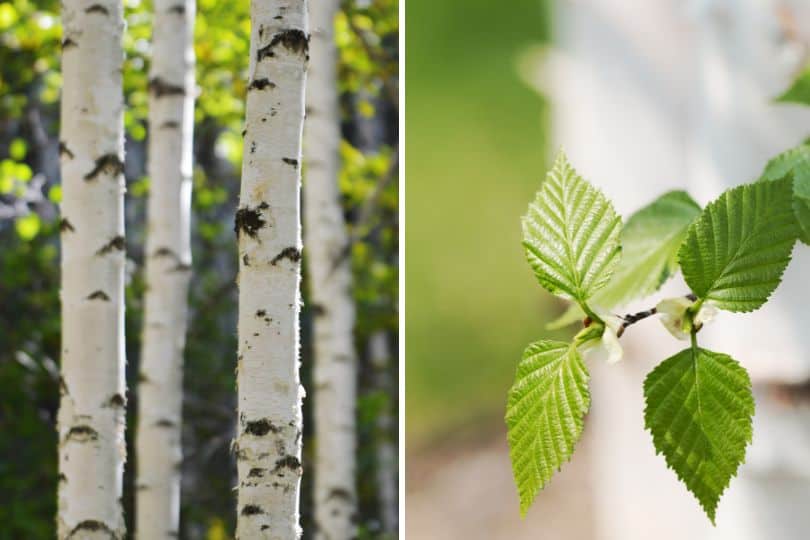
- Common Name: Paper Birch, Canoe Birch, White Birch
- Scientific Name: Betula papyrifera
- Mature Height: 65 to 70 feet
- Native/Non-Native: Native to North America
- Flowers/Cones: Cones
- Uses: Paper pulp, firewood, flooring, snowshoe frames, handles, toys, spools, toothpicks, and interior finish.
The Paper Birch is a lovely tree distinguished by its white bark, which peels off in thin sheets. The bark is particularly thin and papery, turning almost pure white as the tree ages. Many pores known as “lenticels” run along the bark. The bark of old trees becomes thick and scaly, and it can even turn dark, almost black.
This tree can reach heights of 70 feet and has oval or heart-shaped leaves with irregular teeth around the edges. The leaves are pointed and about 2-3 inches long, with a yellowish-green underside. In the fall, they turn a bright yellow color.
The Paper Birch has numerous applications. Its wood is hard, tough, and light, making it ideal for toys, spools, toothpicks, snowshoe frames, handles, paper pulp, flooring, firewood, and interior finish. Northern Indians used the bark of the Paper Birch to make canoes, wigwams, baskets, cups, bags, and other useful utensils in past.
The Paper Birch bears small cone-like fruits that ripen in August and September. The cones are filled with numerous tiny seeds that the wind can easily carry away. These seeds, as well as birch sprouts that grow from the roots, can easily propagate the tree.
Common Birch Trees In Minnesota – Frequently Asked Questions (FAQs)
Let’s go over some of the most frequently asked questions people in Minnesota have about birch trees. These questions were compiled from gardening and tree-related forums and threads.
Can birch trees grow in Minnesota?
Birch trees thrive in Minnesota and neighboring western states. In fact, three types of birch trees are native to the state: yellow birch, river birch, and paper birch.
What is the best birch for Minnesota?
Native varieties are always the best option when it comes to planting trees in backyards and front yards. The native birch trees in Minnesota include yellow, river, and paper birch. All these three trees provide a nice makeover to your yard regardless of the choice.
How long do birch trees in Minnesota live?
Birch trees in Minnesota can live for many years depending on the species, growing conditions, and other factors. The paper birch (BetulaThe paper birch (Betula papyrifera) is one of the most common birch species in Minnesota, and it can live for up to 70 years or more in ideal conditions. Other species, such as the yellow birch (Betula alleghaniensis) and the river birch (Betula nigra), have shorter lifespans, ranging from 30 to 50 years.
Similar Articles
- Native Flowering Trees In Minnesota
- Native Pine Trees In Minnesota
- Native Oak Trees In Minnesota
- Native Maple Trees In Minnesota
- Native Aspen Trees In Minnesota
- Native Ash Trees In Minnesota
- Native Elm Trees In Minnesota
- Native Cherry Trees In Minnesota
- Native Spruce Trees In Minnesota
- Native Hickory Trees In Minnesota
- Native Cedar Trees In Minnesota
Sources
The Regional Gardening team makes sure that the information in our articles is accurate by only using sources that are known to be trustworthy. Some of these sources are peer-reviewed journals from government agencies, well-known universities, and scientific research organizations.
- Minnesota’s Native Trees, Department Of Natural Sciences, Minnesota State.
- Forestry Division, Minnesota State.
- Yard And Garden, University Of Minnesota Extension
- Native Plants, University Of Minnesota Extension
- Select Trees And Shrubs For Minnesota Landscapes, University Of Minnesota Extension
- Trees and shrubs for pollinators, University Of Minnesota Extension
- Department Of Agriculture, Minnesota State.


